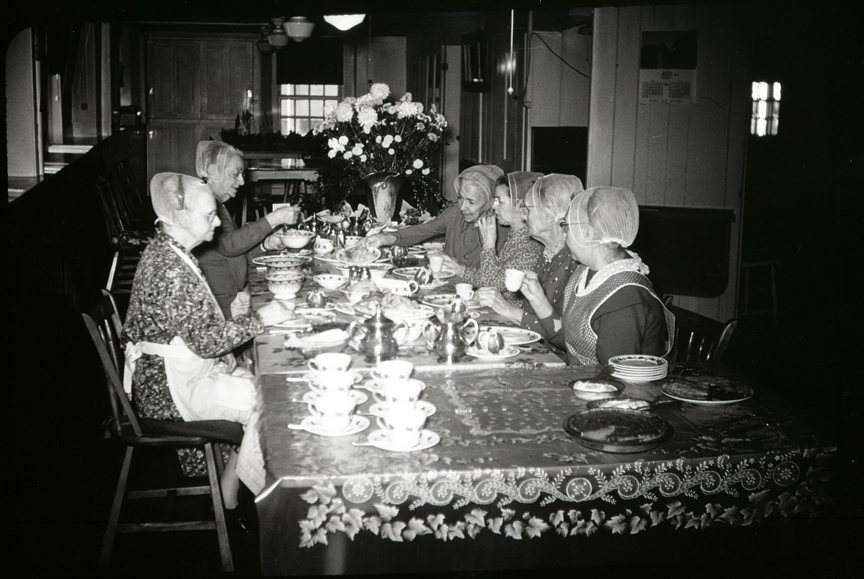
As people across the United States gather around their Thanksgiving tables, they participate in a social ritual ages old and rich with meaning. Anthropologists who study commensality know that this activity creates and strengthens relationships. It’s not the tasty and traditional foodstuffs that contemporary media chefs urge us to make and photograph and upload to Instagram. It’s the people gathered around the table (and the kiddie table) who, together, celebrate community through eating and drinking together.
This the Shakers of Canterbury did in every meal—in silence at daybreak, noontime, and evening, sharing whatever was served. Like so many others, they gave thanks at every meal.

The modern Thanksgiving may be traced to harvest festivals (and for Americans, the intervention of President Abraham Lincoln in 1864). Harvest implies abundance, but abundance itself is always relative. Even in years of poor harvest, whatever plenty there was to be had was generously shared.
If Americans link the modern national holiday of Thanksgiving to a historic harvest meal in Plymouth, Massachusetts, the Canterbury Shakers linked the origins of their community to the first meal taken as a “perfect, ordered” Shaker family, as Brother Henry C. Blinn (1824-1905) put it.
The first meal and the only one recorded, having reference to this special family, was quite simple. It consisted largely, of “bean porridge,” with a small amount of brown bread. A simple repast indeed, for able bodied men and women. We trust they accepted the blessing with thankful hearts, as they studied this rigid economy. And even at this early date they would give alms to the poor.
Bean porridge and brown bread constituted a humble mainstay of many Northern New Englanders’ winter meals. Blinn described this one-pot meal was “a very wholesome and nutritious article of diet” in winter. White beans were cooked in the “meat liquor” left from stewing a piece of corned beef or salt pork. To this was added dried corn and cornmeal.
And bean porridge proved perfect for leftovers and even freezing.
At times the people lived very sparingly. … The farmers when they went with their teams to the woods would often have their dinner prepared. This consisted at the time, of a large kettle of bean porridge. After being sufficiently cooked one of the sled stakes was placed in the kettle and the mass allowed to freeze. It was now ready for transportation to the woods.
The stake was returned to its place in the sled and the kettle bottom up, rode without harm. At noon the porridge was warmed and the dinner was received with thanksgiving.
Move over, Swanson and Lean Cuisine!
Certainly the old rhyme, “Bean-porridge hot, bean-porridge cold / Bean-porridge best when nine days old,” summarizes the early Canterbury Shakers’ reliance on this satisfying food.
Shared from a common pot—perhaps like that French-fried-onion-topped green-bean casserole today—bean porridge filled stomachs. Yet it also filled hearts with the generative love of and for the Shakers gathered in common purpose around a common table.




